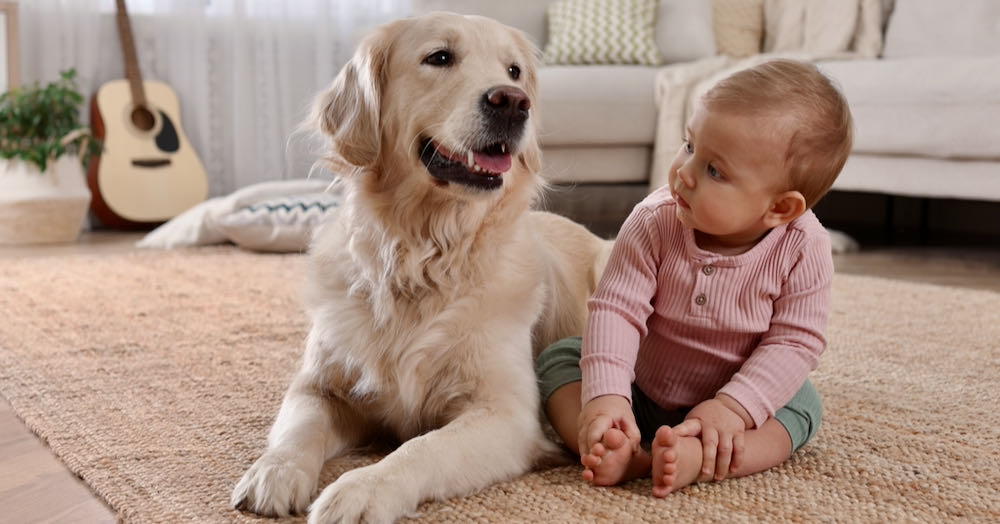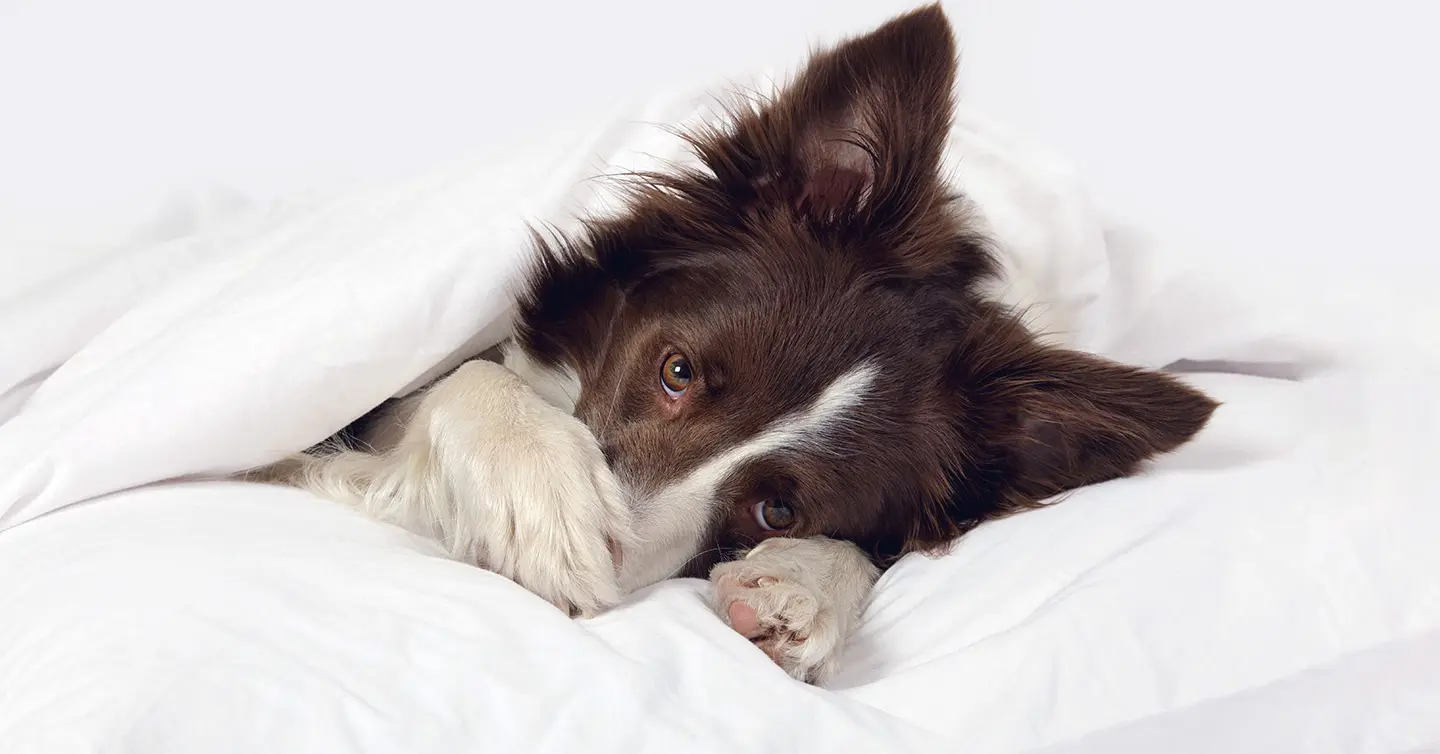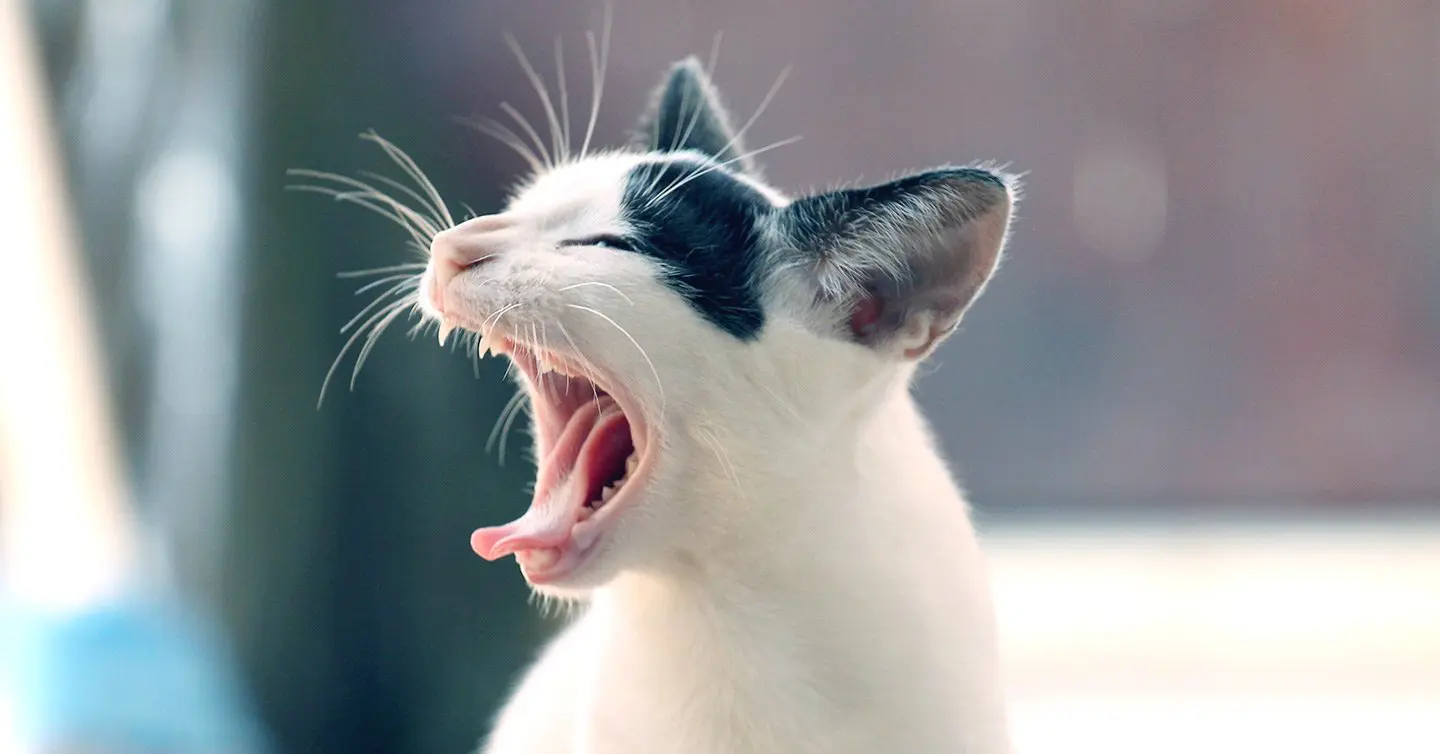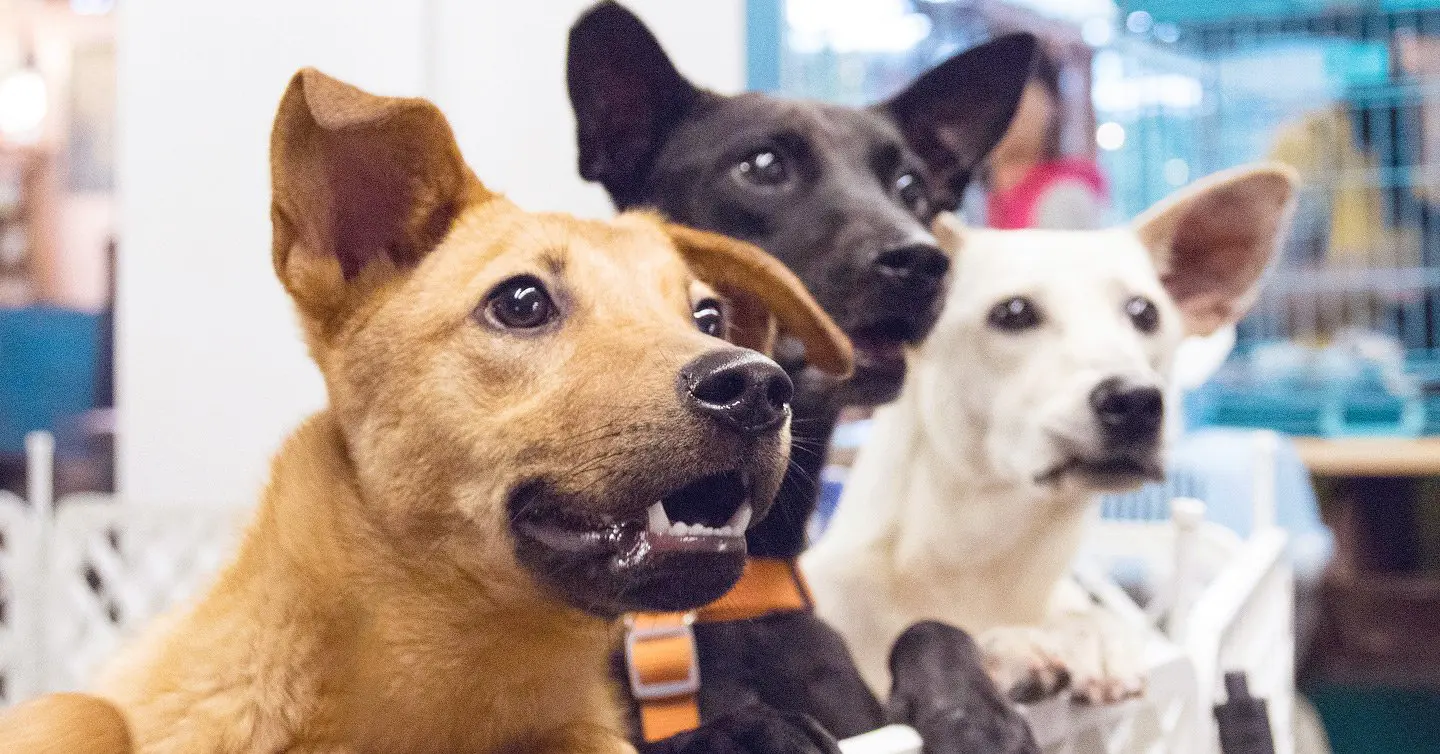Key Points
- Dogs and babies should be introduced slowly in a safe environment that’s comfortable for both of them.
- Preparation should start before the baby arrives with new boundaries, training, and adjustments to routine.
- Supervision is key; don’t leave your baby and dog alone together, even if they seem like fast friends.
Congratulations on your growing family! Welcoming a new baby is an exciting milestone. And while you’re preparing for late-night feedings and diaper changes, it’s also important to consider how to introduce your baby to your dog.
So, how do you make this a positive experience for everyone in the household? TikTok and Instagram are full of adorable videos showing the moment when a beloved dog meets the family’s new bundle of joy. Of course, as in all things, social media doesn’t always reflect reality.
When introducing your baby to your dog, follow these steps for a safe and stress-free introduction. Hopefully, you’ll be setting the stage for a lifelong bond between your little one and your favorite furry friend.
When can you introduce your dog to your baby?
You can introduce your dog to your baby as soon as you bring them home; however, you should prepare even earlier for a smooth transition. Begin the introduction gradually by allowing your pup to become familiar with baby scents and sounds in the days leading up to the big meeting.
When the big homecoming day arrives, go slow and create a safe, controlled environment for both your pup and your newborn to start on the right paw.
Step 1: Assess your dog’s behavior
Before your baby becomes the newest (and tiniest) member of the pack, make sure your dog is ready to handle the change. They should reliably follow basic commands like sit, stay, and leave it. (When your baby inevitably starts chucking their pacifier on the ground, “Drop it!” can also come in handy.) These will be your best tools for keeping your dog calm and controlled.
If your dog is already nervous or aggressive towards new people, noises, and changes, consider dog training classes before the baby arrives. Also, knowing how to introduce a hyper dog to a baby requires extra steps, like leash training indoors and reinforcing calm behavior.
Step 2: Change the routine slowly
Babies shake up schedules, and the last thing you want is a confused, restless pup when you’re running on two hours of sleep.
Start adjusting feeding times, walk times, and playtime in advance so your dog isn’t caught off guard when life suddenly revolves around diaper changes and feedings.
Step 3: Set boundaries
Your dog needs to know where they can and can’t go before the baby arrives. If the nursery is off-limits, start enforcing that rule now. Baby gates, training, and clear, consistent rules will help your pup understand their new limits.
Step 4: Introduce the baby’s scent
Before your dog meets the baby for the first time, bring home a baby blanket or an article of clothing that carries the baby’s scent. You can also dab a little baby lotion or baby powder on it to help your dog get familiar with the new smells. Let them sniff it in a calm, positive setting, and reward gentle curiosity with a treat to help your dog associate the baby’s scent with good vibes, not stress.
Step 5: Keep the first meeting calm & controlled
A hyper dog and a fragile newborn aren’t the best mix. Make sure your pup is calm, exercised, and on a leash before the big introduction. Let them observe from a distance first, moving closer only if they stay relaxed and respectful. Dogs mirror your energy, so stay cool and confident.

Step 6: Let your dog sniff the baby gently
Hold the baby securely and let your dog approach at their own pace. A gentle sniff of the baby’s feet is plenty for now. If they stay calm, reward them with praise or a small treat to build a positive first impression.
Step 7: Watch your dog’s body language
Dogs don’t talk, but they sure do communicate. Watch for signs of stress like lip licking, yawning, stiff posture, or avoidance. If your dog seems nervous, give them space and let them process at their own speed — forcing it will only make things worse.
Step 8: Be consistent & patient
Despite what you may have seen on TikTok, not all baby-dog relationships are love at first sight. Don’t rush it: if your pup seems unsure, try again later. Keep interactions short, sweet, and positive, and over time, your dog will adjust. The goal? A happy, well-balanced family, four-legged members included.
Tips to keep your baby comfortable
Your little one is discovering the world, and that includes your dog. Help them feel safe and confident around your pup with these strategies.
Teach gentle interactions
As your baby grows and becomes more curious, teach them how to interact with the dog respectfully. Show them how to gently stroke the dog instead of grabbing, and explain that pulling ears or tails can hurt. Positive reinforcement goes both ways — praise your baby for being gentle just as you do with your dog.
Always supervise
Even the most well-behaved dog shouldn’t be left alone with a baby. Supervise all interactions to make sure they remain calm, safe, and positive. This helps prevent any unintentional rough play that could make your dog nervous or defensive.
Create a baby-only play area
Your baby needs a space to explore and play freely without an overly excited pup getting in the way. Use baby gates, playpens, or designated baby-friendly spaces to give your little one a safe area while ensuring your dog doesn’t feel left out.
Tips to keep your dog comfortable
Big changes can be overwhelming for your pup. Keep them happy and stress-free with these adjustments.
Keep up with walks and playtime
A new baby means big changes, but your dog still needs love, exercise, and quality time together. Try to keep up with regular walks, play sessions, and cuddle time so they don’t feel ignored or replaced. A tired dog is a happy (and well-behaved) dog.
If you’re feeling overwhelmed taking care of the baby, call in favors from family, friends, and neighbors. Hopefully, they’ll be happy to walk and exercise the dog occasionally.
Provide a quiet place to relax
Babies can be loud and unpredictable, which can be stressful for your pup. Give them a cozy spot where they can retreat when they feel overwhelmed. Whether it’s a crate, a dog bed in a quiet room, or a specific corner of the house, this safe space lets them recharge when needed.
Reward calm behavior
Even if your dog is well-trained, consistency is key. Continue reinforcing calm behavior around the baby with treats, praise, or petting. If any unwanted habits pop up (like jumping or barking), gently correct them before they become a problem.
Stick to a routine
Dogs thrive on routine, and a new baby can throw that off. Try to keep feeding times, walks, and bedtime schedules as close to normal as possible. A predictable routine helps your dog feel secure and reduces anxiety, making the transition easier for everyone.
What about hyper dogs?
If you’re wondering how to introduce a hyper or overly rough dog to a baby, you’ll need extra tips to ensure safe interactions.
- Help your dog burn off energy with more exercise, longer walks, and active play.
- Keep their mind busy with puzzle toys, training, or scent games.
- Teach calm behavior and encourage soft play.
- Use leash training indoors. Keep them on a short leash when around the baby to maintain control.
- Keep meetings short. If your dog gets overstimulated, end the session and try again later.
- Ignore hyper behavior. Don’t reward jumping or rough play with attention.
Finally, remember that dogs are often happiest after they’ve received proper dog training from a professional. Your dog wants to know the rules so they can please you, and animal behavior experts can help correct bad behavior.
Newborn babies & dog hygiene

While some parents worry about germs, research shows that growing up with a dog can actually help strengthen a child’s immune system, and it’s associated with lower rates of allergies and even obesity later in life. The key is finding the right balance, allowing your baby to benefit from early exposure to pet microbes while maintaining good hygiene practices.
Discourage dog licking
Dogs explore the world with their mouths, and while licking can be a sign of affection, it can also introduce bacteria to a newborn’s sensitive skin. Gently discourage licking, especially on the baby’s face, hands, and pacifiers.
Regular hand washing
Keeping those hands clean is one of the easiest and most effective ways to keep germs away from your baby. Make sure everyone in the house washes up thoroughly with soap and water, especially after petting the dog or handling their toys.
Keep your dog clean
A clean pup means a cleaner home. Regular grooming isn’t just about making your dog look good, it helps reduce shedding, dirt, and allergens, keeping your home fresher and healthier for your baby. The same goes for your dog’s favorite bed, chew toys, and food bowls, which can quickly become bacteria hotspots.
What dogs are good with babies?
Many dog breeds are naturally gentle and patient with babies. Some great family-friendly breeds are:
Even if your dog isn’t on this list, don’t worry. With patience, preparation, and supervision, most dogs can adjust well and develop a great bond with your baby.
Keeping your dog healthy is just as important as the introduction itself. Regular vet visits, vaccines, and parasite prevention keep your pup in top shape and your baby’s world a little cleaner.
Pumpkin Pet Insurance plans can help with surprise vet bills — because teething toys and dog treats aren’t the only expenses ahead. With a little patience and care, your baby and dog can grow up as the best kind of partners in crime.




